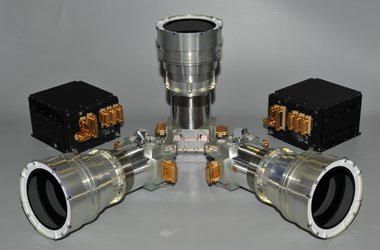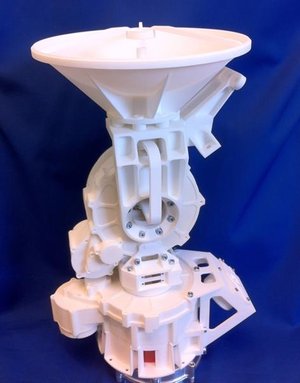Europe dominating satellite startracker market
Like sailors of old, satellites in space take their bearings from the stars. Startrackers are an essential ingredient of space missions – and European companies dominate their commercial supply, benefiting from ESA’s long-term technical coordination.
More than 75% of the global startracker market is today commanded by three European companies: Sodern in France, with its existing SED26 and new Hydra products, Selex Galileo in Italy, with its AA-STR, and Jena Optronik in Germany, with its Astro APS.
These startrackers are equipping missions from the US, Russia, China, Japan and India. Some 248 startrackers are being supplied by Selex Galileo for the Iridium NEXT comsat constellation alone, while Jena has captured most of the US satellite telecommunications market and more than a hundred of Sodern's Hydra units have been sold.

“Our triple-headed Hydra startracker flew in space for the first time on France’s Spot-6 Earth observation satellite, launched on 9 September,” remarked Didier Vilaire of EADS Sodern.
The launch was the latest milestone in a continuing industrial success story.
“It comes back to the startracker technology development roadmap ESA put together with its partners at the turn of the century,” explained Stephen Airey of ESA’s Control Systems and Sensors section.

“To keep European startracker suppliers competitive, we aimed for increased autonomy and robustness combined with lower mass and cost, achieved through introducing active pixel sensor technology and advanced software.”
The roadmap was implemented through research contracts with partners, initially through ESA’s Basic Technology Research Programme – supporting general innovation – followed up by ESA Telecommunications and Earth Observation projects.
The underlying active pixel sensor (APS) technology was developed through the Agency’s General Support Technology Programme – preparing technologies for the market – with Belgian funding. The APS detector chips at the heart of these new startrackers are today supplied to manufacturers by ON Semiconductor in Belgium.

“We flew our first APS-based startracker on ESA’s Proba-2 technology demonstration satellite in 2009,” added the section’s Steeve Kowaltschek.
“This in-orbit demonstration proved crucial – it got the wider space industry interested, who tend to be conservative about new technologies until they are flight qualified. It proved in orbit the robustness we’d claimed on the ground.”
APS startrackers are due to fly on a host of ESA missions, starting with next year’s Alphasat and Sentinel-2 and -3.

“Another key feature of these new generations of startrackers is that they boast as much intelligence as possible,” explained Stephen.
“So, for instance, they can quickly solve the ‘lost in space’ problem – identifying where they are in space from a cold start – even during the unfavourable scenarios of high solar activity and a rapidly rotating satellite. They’ll autonomously pin down their orientation and any rotation rate.

“The result is a new way of doing attitude control – startrackers can now be relied on by themselves for a large number of missions, without the need for secondary attitude devices such as Earth or Sun sensors or gyros.”
But continued innovation is essential to keep Europe on top. ESA has now finalised a new technology development plan for European startrackers, essential because US and Chinese companies and governments devote large budgets to developing their own APS startrackers in response to the current European dominance.
| This article continues... |
|
| Next |
|










